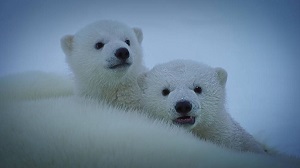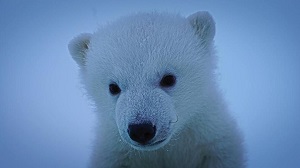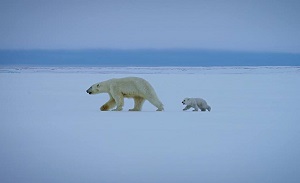Please activate JavaScript in your browser to use all interface options.
Rosneft Conducts First Expedition to Study Polar Bears This Year
12 May 2021
The first field studies of the polar bear population this year have been completed as part of Rosneft Oil Company’s corporate environmental programme. Specialists from the Severtsov Institute of Ecology and Evolution of the Russian Academy of Sciences monitored the animals as the females emerged from their dens on Alexandra Island in the Franz Josef Land archipelago. The total length of the expedition routes exceeded 1,500 kilometres.
Rosneft places a high priority on environmental protection in the planning and conduct of its business activities. Under an agreement with the Russian Ministry of Natural Resources, the Company is implementing a programme to preserve the biodiversity of Arctic ecosystems, which is part of the Ecology national project. Specialists from the Company’s Arctic Research Centre collaborate with scientists from the country’s leading research institutes to study populations of polar bears, walrus, ivory gulls and wild reindeer. These animals are considered bioindicator species of ecosystems. Their condition informs scientists about the state of the Arctic’s fragile nature.
Under an agreement with the Russian Ministry of Natural Resources, the Company is implementing a programme to preserve the biodiversity of Arctic ecosystems, which is part of the Ecology national project. Specialists from the Company’s Arctic Research Centre collaborate with scientists from the country’s leading research institutes to study populations of polar bears, walrus, ivory gulls and wild reindeer. These animals are considered bioindicator species of ecosystems. Their condition informs scientists about the state of the Arctic’s fragile nature.
During the most recent expedition, scientists recorded 15 polar bears. Nine animals were examined using a remote immobilisation method that posed no threat to their life or health.  The specialists performed complex morphometric measurements of the bears’ vital parameters, weighed them and took blood and fur samples for genetic, biochemical and toxicological analyses.
The specialists performed complex morphometric measurements of the bears’ vital parameters, weighed them and took blood and fur samples for genetic, biochemical and toxicological analyses.
Three females were fitted with special collars equipped with Argos satellite transmitters. Signals from these devices allow the animals’ movements to be monitored remotely. The first transmitter data recorded the migration of female bears with cubs across fast ice from Alexandra Land to George Land and their exploration of the island’s coastal bays.
Note for Editors:
he polar bear is the world’s largest terrestrial predator and is listed in the Russian Red List and the Red List of the International Union for Conservation of Nature. Their habitat in the Russian Arctic covers all seas except the White Sea and the Arctic Basin. Seasonal migrations of the animals depend on the dynamics of the ice cover. In spring and summer, the bears move northwards following the retreating ice, in search of foraging grounds.
Rosneft has been studying the polar bear population since 2014. The results of numerous expeditions help to expand and update the data on the animals at the top of the food chain considerably, as well as to develop a plan of action to protect the population. All polar bears in Russian zoos are also under the Company’s care.
Rosneft
Information Division
May 12, 2021

-315xx70.png)

